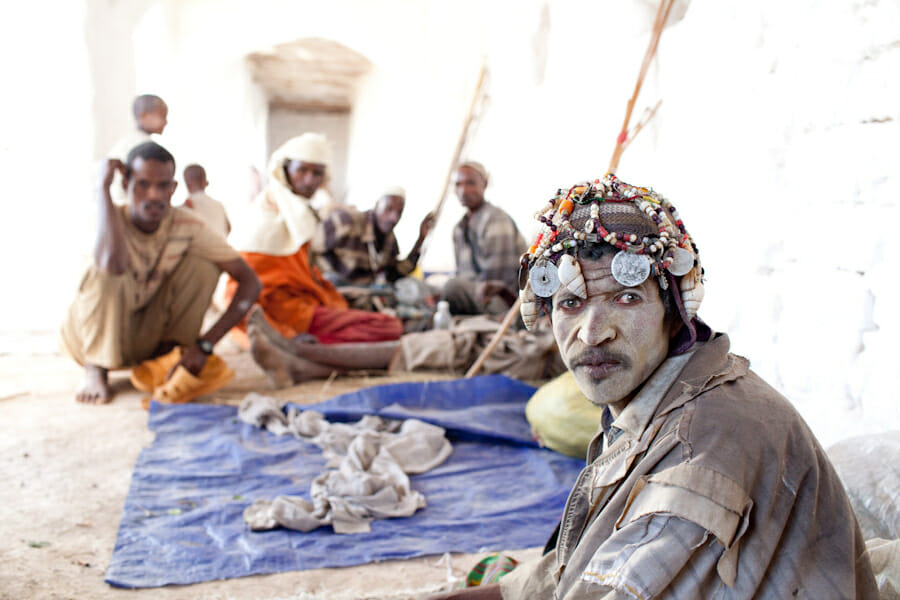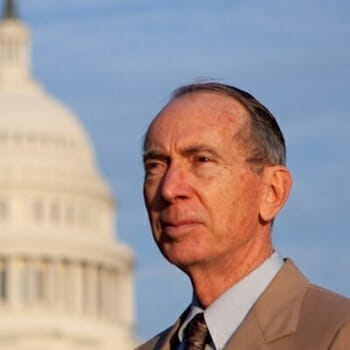
Culture
A Look at Muslim-Christian Relations in Ethiopia
The Muslim-Christian relationship in Ethiopia has a mixed historical background. Ethiopia is located on a religious fault line, although the relationship between the two religions has been reasonably cordial in recent decades. Christian rule has prevailed in the Ethiopian highlands since the early 4th century. Early in the 7th century a group of Arab followers of Islam in danger of persecution by local authorities in Arabia took refuge in the Axumite Kingdom of the Ethiopian highlands.
As a result of this generosity, the Prophet Mohammed concluded that Ethiopia should not be targeted for jihad. Not all Muslims took this message seriously and subsequent contact was less cordial. In the late 15th century, Islamic raids from the Somali port of Zeila plagued the Ethiopian highlands. In the first half of the 16th century, the Islamic threat became more serious when Ahmad ibn Ibrahim al Ghazi rallied a diverse group of Muslims in a jihad to end Christian power in the highlands. The Ethiopians finally defeated this threat by the middle of the 16th century.
Although Wahhabi missionaries from the Arabian Peninsula made efforts to penetrate Ethiopia beginning in the 19th century, they had little success until recent decades. During the first half of the 1800s, Egyptian/Ottoman power in neighboring Sudan made periodic incursions inside Ethiopia. In 1875, the khedive of Egypt tried unsuccessfully to conquer Ethiopia entering from the Red Sea.
The last major organized threat from Islam occurred in 1888 when the forces of the Mahdi in the Sudan sacked the former Ethiopian capital of Gondar and burned many of its churches. Subsequently, both the Ethiopians and the Mahdists harbored rebels opposed to the other side, creating a tit-for-tat situation that has periodically continued to the present day.
The last manifestation of this tit-for-tat practice occurred late in the 1990s when Ethiopia provided refuge and support to the Christian and animist Sudan People’s Liberation Army, which opposed the government in Khartoum. For its part, Sudan’s Islamic government supported a number of Ethiopian rebel groups and tried to export Islamic fundamentalism to Ethiopia. Ethiopia’s concern was greatest when the National Islamic Front led by Hassan al-Turabi tried to export Islamic fundamentalism throughout the region.
In the mid-1990s, Ethiopia joined the so-called U.S.-led front line states initiative that included Ethiopia, Eritrea and Uganda and was designed to put military pressure on the Islamist regime in Khartoum. At the time, Ethiopia’s greatest concern about Sudan was the threat of Islamic fundamentalism. The Ethiopia-Sudan relationship changed dramatically after the outbreak of conflict in May 1998 between Ethiopia and Eritrea. Both Ethiopia and Eritrea decided they needed Sudan as an ally so they could focus on fighting each other. Ethiopia-Sudan relations have been good ever since.
The Impact of Somalia
Relations between Ethiopia and Muslim Somalia have been equally troubled over the years. Some of the historical Muslim attacks on the Ethiopian highlands originated in what is today Somalia or Somali-inhabited parts of Ethiopia. After Somalia’s independence in 1960, it pursued a policy called Greater Somalia aimed at incorporating the Somali-inhabited section of Ethiopia (about one-fifth of Ethiopia’s land area) into Somalia. The Greater Somalia effort also tried to incorporate the Somali-inhabited portion of northeastern Kenya and all of Djibouti (about 60 percent Somali and 40 percent Afar) into Somalia.
In the late 1970s, Somalia invaded the Somali-inhabited Ogaden region of Ethiopia. Ethiopia was only able to push back the Somali troops with the help of Cuban forces and Soviet military advisers and equipment. In the mid and late 1990s, an Islamic group in Somalia, al-Ittihad al-Islami, carried out several attacks inside Ethiopia, including an attempted assassination of Ethiopia’s minister of telecommunications, an ethnic Somali. Ethiopia cracked down hard on al-Ittihad, even attacking some of its bases across the Ethiopian border inside Somalia. Al-Ittihad disappeared as a viable organization early in the 21st century but was replaced by other Islamist groups that Ethiopia considered a threat.
Fearing a spillover of Islamic fundamentalism from Somalia, Ethiopia sent troops at the end of 2006 into Somalia at the request of the Nairobi-based Somali Transitional Federal government to defeat the militias of the Islamic Courts, which had taken control of much of the country. While Ethiopian troops easily defeated the Islamic Courts, Ethiopia found itself as an occupying force in Mogadishu.
After the collapse of the Islamic Courts in Somalia, a more extreme group known as al-Shabaab (the Youth) increased its support by urging Somalis to join the fight against the Ethiopian occupiers. This rallying cry was effective; the Ethiopians were unable to extend their control beyond Mogadishu and faced constant attacks in the capital by al-Shabaab. Ethiopian forces remained in Mogadishu until January 2009 when an African Union force was finally strong enough to hold part of the city on behalf of the weak Somali government. Ethiopian forces subsequently, however, have periodically crossed into Somalia to support Somali government forces against the al-Shabaab threat.
Internal Muslim-Christian relations
According to the 2007 census, there were about 25 million Muslims in Ethiopia or almost 35 percent of the population. Many Muslims argue the percentage is higher, and they could be correct, but there are no statistics to support their claim. It is important, however, to put the significance of Ethiopia’s Muslim population in perspective. Estimates as of 2010, put the total number of Muslims in Ethiopia at 29 million or more than the number of Muslims in Saudi Arabia, Syria or Yemen and almost as many as in Sudan. Although the Muslim community is a minority in Ethiopia and it is diverse in terms of ethnicity, it is an increasingly important part of society and political life.
While Sufi tradition has historically been high in Ethiopia, there is no agreement today on the percentage of Ethiopian Muslims who follow a Sufi tradition. I have heard estimates ranging from a high of 80 percent Sufi followers to the suggestion that a majority of Ethiopian Muslims now hold non-political Salafist views.
The Muslim population is scattered throughout Ethiopia but concentrated on the southern, eastern, and western periphery. Ethnic groups that are entirely Muslim include the Somali, Afar, Harari and a number of smaller groups along the Sudan border. The largest ethnic group in the country, the Oromo, has a significant Muslim component; Oromos I have spoken with estimate that between 50 and 60 percent are Muslim.
By comparison, according to the 2007 census, Ethiopian Orthodox followers account for almost 44 percent of the population, Protestants almost 19 percent and Catholics less than 1 percent. The significant increase in the percentage of Ethiopia’s population that has recently become evangelical Protestant has alarmed some leaders in the Ethiopian Orthodox Church even more than their concern over Islamic fundamentalism. This is often related to the aggressive efforts by some Protestant groups to proselytize Ethiopian Orthodox and Muslim believers.
The government of Ethiopia, whose leadership remains largely Christian, recognizes both Christian and Muslim holy days. The government accorded legal status to the Supreme Council of Islamic Affairs in 1992, lifted restrictions on travel to Mecca, and repealed the ban on the importation of religious literature. The 1994 Constitution implicitly sanctioned the use of sharia and the 1999 Federal Courts of Sharia Consolidation Proclamation explicitly did so. Sharia courts are being used more frequently for civil cases so long as both parties agree to take the matter there. The ruling Ethiopian People’s Revolutionary Democratic Front (EPRDF) has opened up senior government positions to Muslims.
But otherwise cordial Muslim-Christian relations have been periodically interrupted by negative incidents. In 1995, for example, there was a clash between police and Muslims at the al Anwar mosque in Addis Ababa. Some Ethiopian Muslims have complained that the government has been interfering in the affairs of the Supreme Council of Islamic Affairs for the past two decades.
Impact of Wahhabi/Salafi influence
A growing number of Ethiopian Islamic scholars, fluent in both Amharic and Arabic, have studied in Saudi Arabia and subsequently returned to Ethiopia as part of the Wahhabi movement. Others are studying at al-Azhar in Cairo. They strongly oppose the Sufi-inspired traditional practices and in a few cases encouraged the desecration of traditional Oromo Sufi Muslim tombs. There were even unconfirmed reports of the destruction of mosques frequented by followers of Sufi Islam.
In 2004, the Supreme Council of Islamic Affairs voted to remove all executive members of the Council and replace them with strong anti-Wahhabists. Some Muslims charged that the government was behind the move. Behind the scenes, money from Saudi Arabia and the Gulf States flowed into Ethiopia to build more mosques, Islamic schools and orphanages. The orphans receive a fundamentalist education and are expected to encourage others to follow this theology. One Saudi-based Islamic charity, the al-Haramain Islamic Foundation, completed 16 mosques as of 2000 and had plans to fund 259 more. Al-Haramain subsequently was shut down and it is not clear how many mosques were actually constructed. It reached a point where the Ethiopian government reportedly asked Saudi Arabia to press Saudi funding sources to cease and desist.
Reports are conflicting as to the degree of influence the Wahhabis have had in Ethiopia. Some of my interlocutors—Muslim and Christian—downplay the influence. Where the Wahhabis have had influence, it seems to be among the young, poor and unemployed. But that constitutes a big chunk of Ethiopian society. There are also increasing numbers of Muslim women wearing the complete cover, including a veil over the eyes. This was almost unheard of during my time in Ethiopia in the late 1990s. During my visits to Ethiopia in the last ten years, some Ethiopian officials have expressed serious concern about the impact the Wahhabi influence will have 20 or 30 years from now.
Where is the Muslim-Christian-EPRDF relationship headed?
The ruling EPRDF had a reputation for successfully cultivating the Muslim community at least through the 2010 elections. If you overlay on a map of Ethiopia predominantly Muslim parts of the country with voters’ support for political parties, the EPRDF has generally done better in Muslim areas than in non-Muslim areas.
In 2012, there was, however, a setback in the EPRDF’s relationship with the Muslim community. There were Muslim protests in Addis Ababa charging that the government is interfering in Muslim affairs, trying to pack the Supreme Council of Islamic Affairs with persons loyal to government policy, and promoting the views of the small, moderate al-Ahbash Islamic movement, which has a base in Lebanon but links to Harar, Ethiopia. The government denied the charges and argued that a small Islamic faction is trying to create an Islamic state in Ethiopia. The government arrested about 75 Muslims including the leadership of the group that was criticizing the government. This only worsened the situation.
The point person for religious affairs in the government told me in September 2012 that Salafists are welcome in Ethiopia as long as they don’t try to force their beliefs on others. He added that the Wahhabis can also flourish in Ethiopia so long as they abide by the Ethiopian constitution. The al-Ahbash movement has such a tiny following that it is hard to believe it is at the center of this most recent conflict between the government and a segment of the Muslim community.
Although the Muslim-Christian and Muslim-EPRDF situation has been relatively quiet in recent months, the problem has not gone away and it is not clear to me where it is headed. Ethiopia does have the advantage of an effective and tough security apparatus that can probably counter any challenge posed by a Muslim splinter group. Broad disaffection in Ethiopia’s large Muslim community is, however, another matter.
